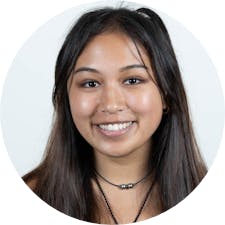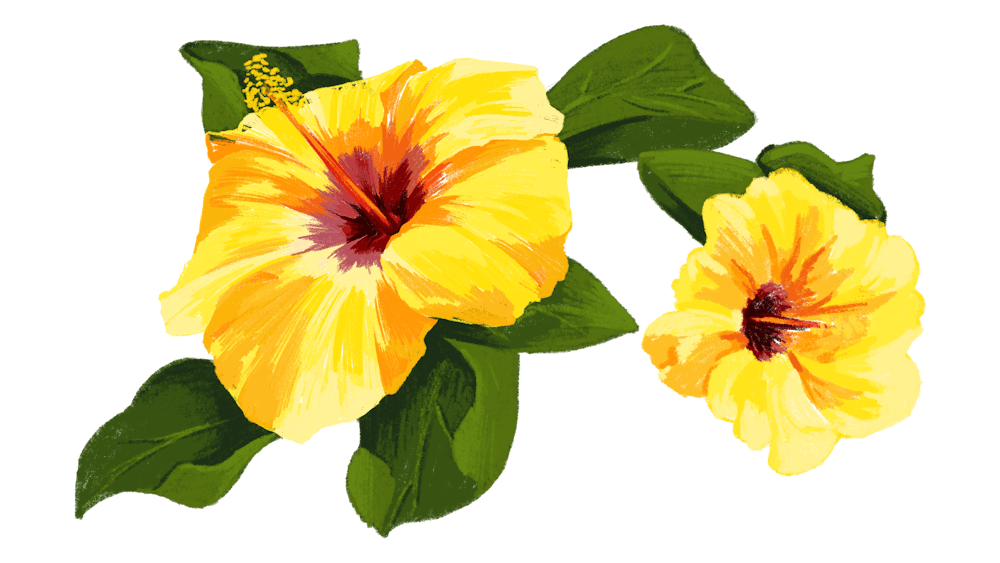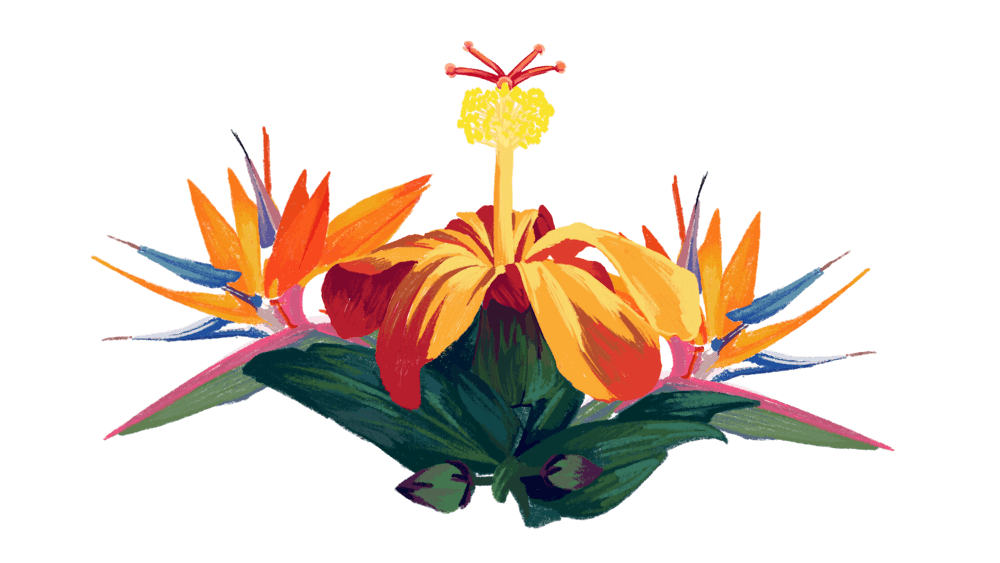Coral research, protecting the world's oceans and promoting island sustainability don't seem like obvious objectives for an institution located in the middle of a desert, but ASU has managed to expand to a place outside its arid home state to further its "research and discovery of public value."
According to Bryan Brayboy, ASU's vice president of social advancement, ASU in Hawaiʻi started in 2014 when ASU President Michael Crow met with Jack Wong, the CEO of Kamehameha Schools, and the two agreed to be educational partners. Kamehameha Schools is a private Native Hawaiian-serving institution with three different K-12 campuses across the islands.
Since then, the partnership has grown, developing various relationships and projects across the islands. ASU now works with several other organizations in Hawaiʻi, including the University of Hawaiʻi, Polynesian Voyaging Society and Department of Land and Natural Resources to conduct sustainability research and promote environmental stewardship.
One example of ASU's work on the islands is its collaboration with the Polynesian Voyaging Society to create a virtual "Third Canoe" so people across the world can learn about voyaging.
However, in a time where Native Hawaiians and locals are outspoken about the exploitation and modern colonization of the islands, ASU has to practice cultural awareness through community-driven research and allow room for communities to voice their needs more than ever.
"I don't know if ASU is the appropriate institution to make commitments toward cultural sustainability," said Julie Au, the education, research and outreach director of Native Hawaiian organization ʻĀina Momona, a Native Hawaiian nonprofit organization focused on environmental health and sustainability.
"We have this unfortunate legacy of whitewashed history where research on all things Hawaiian and all things about our home has been conducted by non-Hawaiians who are speaking as authorities for us."
Hawaiian history
The weariness many Native Hawaiians and locals feel toward foreigners going to the islands stems from Hawaiʻi's deep history of colonization.
The Hawaiian Kingdom was recognized as a sovereign nation until 1893, when 13 white businessmen staged a coup against the Hawaiian monarchy, threatening invasion backed by the U.S. military if Queen Liliʻuokalani didn't surrender. The businessmen formed a provisional government and established the Republic of Hawaiʻi, where they immediately pushed for annexation.
In 1898 the U.S. annexed Hawaiʻi. At the time, Native Hawaiians fought to maintain political control, but the U.S. was motivated to pursue Hawaiʻi for the islands' fertile lands and strategic military location.
Hawaiʻi became a state in 1959, by popular vote. But by that time, the majority of Hawaiʻi's citizens were foreigners — the Native Hawaiian population only made up 17% of Hawaiʻi's population. Hawaiʻi was being advertised as a paradise vacation destination where Americans could go without a passport, leading to its booming tourism industry today.
Despite an apology for the annexation by Congress in 1993, Hawaiʻi remains America's 50th state illegally. Many Hawaiians still consider the islands an occupied nation that retains its sovereignty.
The colonization of Hawaiʻi has taken a toll on the native community and the lands. According to population estimates from July 2022, only 10% of Hawaiʻi's population is Native Hawaiian or Pacific Islander.
Incidents like the Red Hill fuel leak, trails and sacred sites deteriorating from tourism, and non-Natives buying up land have affected the state's environment — once pristine prior to colonization.
"All of our very limited and finite resources and lands are being sold away, and we can't afford that land," Au said. "We're struggling, and we're being pushed out into this diaspora."
Because of Hawaiʻi's history with foreign companies and institutions, Au said ASU has to consider its positionality and intentions when working in Hawaiʻi closely.
"They're Arizona State University," she said, "Do they need to be doing sustainability projects in Hawaiʻi? Do we need them? Did we ask for their help? And if we did, then they should be taking the backseat… They should be listening to us, they should be holding community meetings. And when I say community, I don't mean stakeholders.
"I can't see the benefit of a foreign university being an advisor for local issues," she added. "I just really can't."
ASU's work in Hawaiʻi
ASU's School of Ocean Futures is the latest school launched by the College of Global Futures with research centers underway and degree programs expected to start in the fall 2024 semester.
Despite the school being in its beginning phases, it has managed to establish itself in the town of Hilo on the Big Island of Hawaiʻi, where the Center for Global Discovery and Conservation Science resides.
Center director Greg Asner has been working in Hawaiʻi for a few decades in places like UH Mānoa and The Nature Conservancy, and has leveraged his background to connect ASU to Hawaiʻi.
"I very heavily work with (the Department of Land and Natural Resources) and communities, and have for decades," Asner said. "I'm kind of known as that guy that bridges from government to community and was working for many years here."
Asner said ASU came to him in late 2017 and was interested in his work. In 2019, he became director of the ASU Center for Global Discovery and Conservation Science and currently works with the Julie Ann Wrigley Global Futures Laboratory.
"When they came to me, I said, 'Well, here's what I do in Hawaiʻi,' and they said this looks like something that they would want to be a part of and expand because ASU's model, at least for (the Global Futures Laboratory), is very community-based," he said.
As center director, Asner has placed importance on enlisting researchers and scientists who have dedication to Hawaiʻi to ensure that the center's work doesn't lose sight of the implications of being in Hawaiʻi.
"I want to hire people here who … have really invested their life, their intentions in Hawaiʻi to improve our communities and to improve our environment in and around those communities, which is my total focus."
So far, there are two Native Hawaiian scientists who have been hired and are currently working in the center: assistant professors Cliff Kapono and Katie Kamelamela.
Aside from being a professional surfer, Kapono has been analyzing how coral and reefs are affected by land runoff.
A big ongoing Global Discovery and Conservation Science project has been in Miloliʻi, commonly considered the last traditional Native Hawaiian fishing village. Asner, who has been working in Miloliʻi for years, said he and his team have been guided by the community to protect the reef.
As for Kamelamela, she is focusing on connecting forestry to communities. She aims to provide imagery and sounds of forests to online communities so they are already familiarized with the environment when they experience it in real life.
"Not everyone can mālama ʻāina (care for the land) on the weekend," she said. "Some people have extra jobs or ʻohana (family) commitments. But almost everyone has a phone now."
Brayboy has also been heavily involved in making sure ASU's work in Hawaiʻi is community-based. He said his primary role is to serve as a "relationship manager" between the office of the president and ASU's partners in Hawaiʻi.
Brayboy is often asked what ASU is actually doing in Hawaiʻi. He said he usually points to the University's charter — something that resonated with both Kapono and Kamelamela during their onboarding process. He said ASU has fundraised for all its work in the islands and is not "taking money from Hawaiʻi."
A lot of ASU's work in Hawaiʻi focuses on thoughtfully connecting Hawaiian knowledge with forms of technology, Brayboy said.
"To be honest with you, Hawaiian knowledge is already technological," he said. "That's what fish ponds are. They are engineering marvels. ʻAhupuaʻa are social technologies that were both economic models, but also community and food models… what happens when you introduce other kinds of technology, like my phone or the computer, in ways that feel right?"
Aside from ASU's School of Ocean Futures, there are other University-sanctioned research projects on the islands, including one addressing food insecurity in Maui using artificial intelligence.
The project will use machine learning models to analyze agricultural data and satellite imaging of crops in Hawaiʻi to predict possible issues with the supply of the area's crops and access to them. This information, as well as other information regarding pricing of crops and socioeconomic data, will be presented on a dashboard to help Maui County leaders make informed decisions to combat food insecurity.
Community-driven and ethical research
Au said from what she can tell, she doesn't think the way ASU is conducting research in Hawaiʻi is ethical and would call it modern-day settler colonialism.
"They're not empowering Native Hawaiians as the experts in their own experiences," she said.
"They're not encouraging us to be the leaders and the advocates of change. They're coming in almost like these saviors."
She emphasizes that Native Hawaiians have a history and legacy of sustainability. The Native Hawaiian relationship to the land is reciprocal — whatever they take from the land, they give back.
"If Hawaiians were allowed to actually practice that and have autonomy over our land and resources, we would be sustainable," Au said. "So for an American university to come over here and teach us how to be sustainable when really what we need is America to give us our land back and our autonomy back, as good as the intentions may be, there's nothing ethical about that."
One of the problems Au sees with ASU being in Hawaiʻi is its partnership with UH, which has a notorious reputation for making decisions on behalf of the community without properly involving them.
Au said in order for ASU to ethically pursue work in Hawaiʻi, it needs to have more than just good intentions — community-driven research needs to be the top priority.
"What we need is to be able to tell people, these are our problems, and these are the ideas we have or if we don't have ideas, let us ask for help, let us reach for the handout," she said.
As a Native Hawaiian and a researcher, Kapono has been combining both worlds and analyzing his own positionality as an ASU faculty member.
"The reality is, I don't know if society is ready to hear the hard truths about colonization," he said. "There's a lot of guilt with colonial behavior."
Kapono said, as a researcher, he tries to step outside his Hawaiian lens, while still holding his Indigenous values close. But navigating that position in the University can be exhausting and demoralizing, since it's "really unfair for a lot of Indigenous communities that in order for it to work for everyone, the Indigenous person needs to become uncomfortable for the non-Indigenous to be comfortable.
"I do it for now because I believe sometime in the near future, the world is not going to want to rely on a colonial perspective and colonial behavior," he said.

Savannah is a senior studying journalism with a minor in English. This is her eighth semester with The State Press. She has also worked at the Lonely Planet and Write On Downtown.






